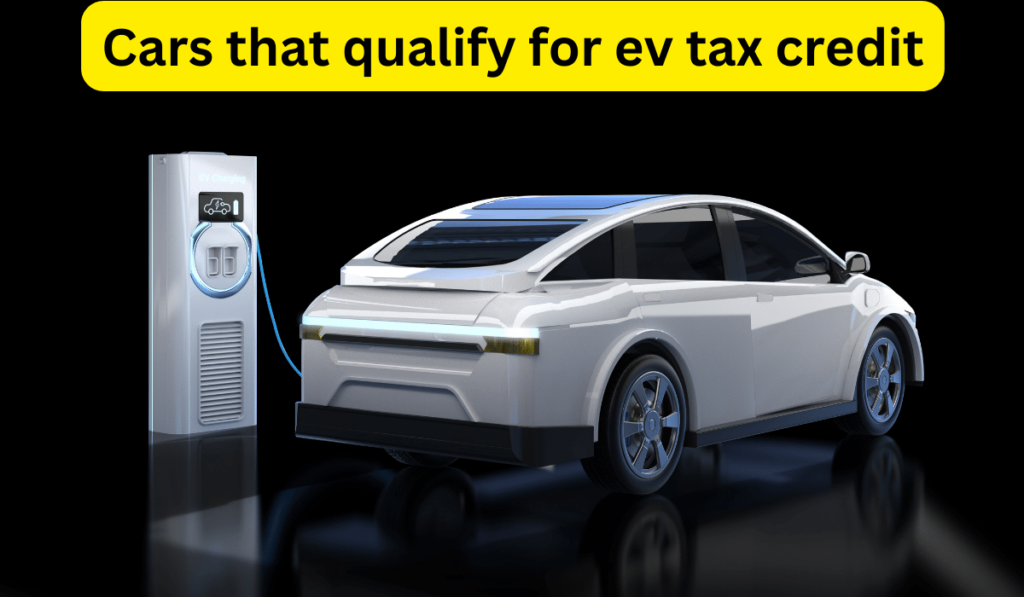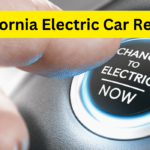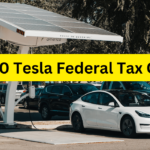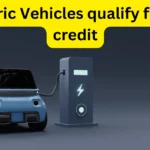In today’s world, where people care more about the environment and cars are getting more advanced, switching to electric cars is becoming more popular and appealing. Alongside the environmental benefits, the prospect of financial incentives further sweetens the deal for prospective buyers.
One such incentive is the $7,500 EV tax credit, a program designed to encourage the adoption of clean vehicles. Let’s discuss deeper into this tax credit, exploring its criteria and how you can make the most of it.

$7,500 EV tax credit
The $7,500 EV tax credit, established under the Internal Revenue Code Section 30D, serves as a nonrefundable tax credit for eligible buyers of new plug-in electric vehicles or fuel cell vehicles. This credit lowers the amount of money you owe for federal taxes, which means you could save a lot. However, to leverage this benefit, understanding the eligibility criteria is paramount.
Qualification Criteria
To qualify for the tax credit, several eligibility criteria must be met:
- Intended Use: To get the tax credit, your car must be bought for your own use, not to sell to someone else later.
- Geographical Usage: It should primarily operate within the United States.
- Income Thresholds: Your modified adjusted gross income (AGI) must fall below specified thresholds:
- $300,000 for married couples filing jointly
- $225,000 for heads of households
- $150,000 for all other filers
Determining the Credit Amount
The amount of the tax credit varies based on when the vehicle was placed in service:
- Prior to April 17, 2023: The credit amount ranges up to $7,500, calculated based on factors such as battery capacity.
- Starting April 17, 2023: Cars need certain new minerals and battery parts to get the biggest credit.
Qualified EV Vehicles
To get the tax credit, cars need to meet certain rules:
- Battery Power: The car’s battery should be at least 7 kilowatt-hours strong.
- Weight Limit: The car’s total weight when loaded should be less than 14,000 pounds.
- Manufacturer: Except for fuel cell cars, it should be made by an approved company.
- Assembly: Final assembly should occur in North America.
- Critical Minerals and Battery Components: Starting April 17, 2023, vehicles need to meet these specific requirements for their minerals and batteries.
Claiming the Credit
There are several methods to claim the EV tax credit:
- Tax Return Filing: Include the vehicle’s year of delivery and service on your federal income tax return and complete Form 8936.
- Point of Sale: Some dealerships offer the option to obtain the credit at the time of purchase, allowing for a reduction in the purchase price.
- Leased Vehicles: Individuals leasing an EV may not individually claim the tax credit, but lease payments can be reduced if the bank transfers part or all of the tax credit savings.
FAQs
Can I claim the EV tax credit for a used electric vehicle?
Yes, the EV tax credit is also available for used electric vehicles.
How long will the EV tax credit be available?
The EV tax credit is currently available for vehicles placed in service from 2023 to 2032, subject to any legislative changes.
Are there any state-specific incentives in addition to the federal EV tax credit?
Yes, many states offer additional incentives such as rebates, tax credits, or reduced registration fees for electric vehicle purchases.
Conclusion
Understanding and maximizing the $7,500 EV tax credit can significantly enhance the affordability of electric vehicle ownership. By meeting the eligibility criteria, exploring qualified vehicles, and navigating the claiming process effectively, buyers can unlock substantial savings while contributing to a cleaner, more sustainable future.
Whether you’re motivated by environmental concerns or financial incentives, embracing electric vehicles represents a forward-thinking choice with multifaceted benefits.
Consult with a tax professional for personalized guidance tailored to your specific circumstances, and embark on your journey towards eco-friendly, cost-effective transportation.
I am the mind behind nammatech.com. I have an experience of more than 8 years in the digital marketing field. The idea behind starting this blog came when one of my friends find it difficult to fill out the application form. So, I came up with an idea to start a blog on this niche.

![Low-Income Housing for Disabled Adults, Seniors Near me [2024] housing for disabled adults](https://nammatech.com/wp-content/uploads/2023/03/Low-income-housing-for-disabled-with-no-waiting-list-near-me-USA1-150x150.webp)

![Low-Income Housing for Seniors near me in USA [2024] Low-income-housing-for-seniors](https://nammatech.com/wp-content/uploads/2023/03/Low-income-housing-for-seniors-150x150.webp)

![Low-income housing with no waiting list near me in [2024] Low-income housing with no waiting list near me](https://nammatech.com/wp-content/uploads/2023/03/Low-income-housing-with-no-waiting-list-near-me-150x150.webp)

![How to qualify for $7500 EV Tax Credit [2024]? claim 7500 EV Tax Credit](https://nammatech.com/wp-content/uploads/2024/02/claim-7500-EV-Tax-Credit-150x150.png)
![Clean Vehicle Rebate Project Application- CVRP Rebate [2024] Clean Vehicle Rebate Project](https://nammatech.com/wp-content/uploads/2024/03/Clean-Vehicle-Rebate-Project-150x150.png)